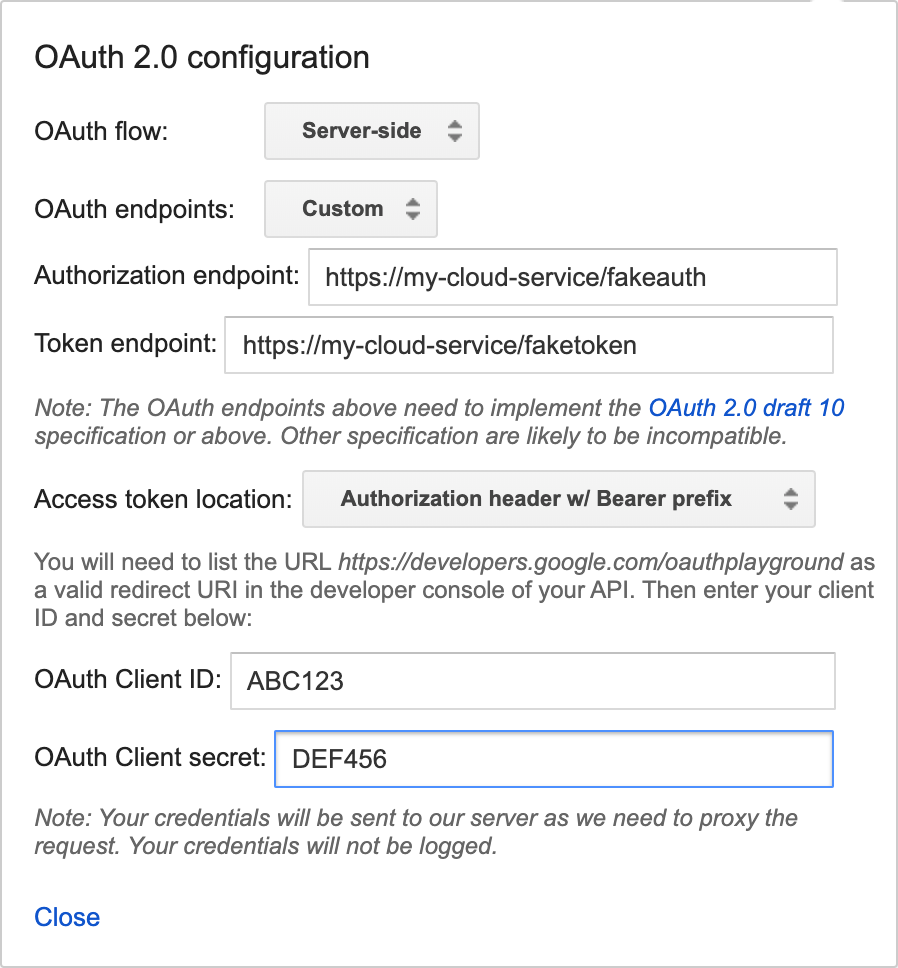Report State adalah fitur penting yang memungkinkan
Tindakan Home secara proaktif melaporkan status terbaru
perangkat pengguna kembali ke Google Home Graph, bukan menunggu
intent QUERY.
Report State melaporkan status perangkat pengguna
dengan agentUserId yang ditentukan yang terkait dengannya (dikirim dalam
permintaan SYNC asli). Saat Google Assistant ingin melakukan tindakan
yang memerlukan pemahaman status perangkat saat ini, aplikasi cukup
mencari informasi status di Home Graph, bukan
mengeluarkan intent QUERY ke berbagai cloud pihak ketiga sebelum mengeluarkan
intent EXECUTE.
Tanpa Report State, dengan mempertimbangkan lampu dari beberapa penyedia di
ruang keluarga, perintah Ok Google, cerahkan ruang tamu memerlukan
penyelesaian beberapa intent QUERY yang dikirim ke beberapa cloud, bukan
hanya mencari nilai kecerahan saat ini berdasarkan pada apa yang telah
dilaporkan sebelumnya. Untuk pengalaman pengguna terbaik,
Assistant harus memiliki status perangkat saat ini,
tanpa memerlukan perjalanan pulang pergi ke perangkat.
Setelah SYNC awal untuk perangkat, platform akan mengirimkan intent QUERY
yang mengumpulkan status perangkat untuk mengisi Home Graph.
Setelah itu, Home Graph hanya menyimpan status yang
dikirim dengan Report State.
Saat memanggil Report State, pastikan Anda memberikan data status lengkap untuk trait tertentu. Home Graph memperbarui status per fitur dan menimpa semua data untuk fitur tersebut saat panggilan Report State dilakukan. Misalnya, jika Anda melaporkan status untuk karakteristik StartStop, payload harus menyertakan nilai untuk isRunning dan isPaused.
Mulai
Untuk menerapkan Report State, ikuti langkah-langkah berikut:
Mengaktifkan Google HomeGraph API
-
Di Google Cloud Console, buka halaman HomeGraph API.
Buka halaman HomeGraph API - Pilih project yang cocok dengan project ID smart home Anda.
- Klik ENABLE.
Membuat Kunci Akun Layanan
Ikuti petunjuk ini untuk membuat kunci akun layanan dari Google Cloud Console:
-
Di Google Cloud Console, buka halaman Create service account key.
Buka halaman Create Service Account Key - Dari daftar Service account, pilih New service account.
- Di kolom Nama akun layanan, masukkan nama.
- Di kolom ID akun layanan, masukkan ID.
Dari daftar Role, pilih Service Accounts > Service Account Token Creator.
Untuk Jenis kunci, pilih opsi JSON.
- Klik Create. File JSON yang berisi kunci yang didownload ke komputer Anda.
Memanggil API
Pilih opsi dari tab di bawah:
HTTP
Home Graph menyediakan endpoint HTTP
- Gunakan file JSON akun layanan yang didownload untuk membuat Token Web JSON (JWT). Untuk mengetahui informasi selengkapnya, lihat Mengautentikasi Menggunakan Akun Layanan.
- Dapatkan token akses OAuth 2.0 dengan cakupan
https://www.googleapis.com/auth/homegraphmenggunakan oauth2l: - Buat permintaan JSON dengan
agentUserId. Berikut adalah contoh permintaan JSON untuk Status Laporan dan Notifikasi: - Gabungkan JSON Notifikasi dan Status Laporan serta token dalam permintaan HTTP POST
ke endpoint Google Home Graph. Berikut adalah contoh cara
membuat permintaan dalam command line menggunakan
curl, sebagai pengujian:
oauth2l fetch --credentials service-account.json \ --scope https://www.googleapis.com/auth/homegraph
{
"requestId": "123ABC",
"agentUserId": "user-123",
"payload": {
"devices": {
"states": {
"light-123": {
"on": true
}
}
}
}
}
curl -X POST -H "Authorization: Bearer ACCESS_TOKEN" \ -H "Content-Type: application/json" \ -d @request-body.json \ "https://homegraph.googleapis.com/v1/devices:reportStateAndNotification"
gRPC
Home Graph menyediakan endpoint gRPC
- Dapatkan definisi layanan buffering protokol untuk Home Graph API.
- Ikuti dokumentasi developer gRPC untuk membuat stub klien untuk salah satu bahasa yang didukung.
- Panggil metode ReportStateAndNotification.
Node.js
Klien Node.js Google API menyediakan binding untuk Home Graph API.
- Lakukan inisialisasi layanan
google.homegraphmenggunakan Kredensial Default Aplikasi. - Panggil metode
reportStateAndNotificationdengan ReportStateAndNotificationRequest. Metode ini menampilkanPromisedengan ReportStateAndNotificationResponse.
const homegraphClient = homegraph({
version: 'v1',
auth: new GoogleAuth({
scopes: 'https://www.googleapis.com/auth/homegraph'
})
});
const res = await homegraphClient.devices.reportStateAndNotification({
requestBody: {
agentUserId: 'PLACEHOLDER-USER-ID',
requestId: 'PLACEHOLDER-REQUEST-ID',
payload: {
devices: {
states: {
"PLACEHOLDER-DEVICE-ID": {
on: true
}
}
}
}
}
});
Java
Library Klien HomeGraph API untuk Java menyediakan binding untuk Home Graph API.
- Lakukan inisialisasi
HomeGraphApiServicemenggunakan Kredensial Default Aplikasi. - Panggil metode
reportStateAndNotificationdenganReportStateAndNotificationRequest. Metode ini akan menampilkanReportStateAndNotificationResponse.
// Get Application Default credentials.
GoogleCredentials credentials =
GoogleCredentials.getApplicationDefault()
.createScoped(List.of("https://www.googleapis.com/auth/homegraph"));
// Create Home Graph service client.
HomeGraphService homegraphService =
new HomeGraphService.Builder(
GoogleNetHttpTransport.newTrustedTransport(),
GsonFactory.getDefaultInstance(),
new HttpCredentialsAdapter(credentials))
.setApplicationName("HomeGraphExample/1.0")
.build();
// Build device state payload.
Map<?, ?> states = Map.of("on", true);
// Report device state.
ReportStateAndNotificationRequest request =
new ReportStateAndNotificationRequest()
.setRequestId("PLACEHOLDER-REQUEST-ID")
.setAgentUserId("PLACEHOLDER-USER-ID")
.setPayload(
new StateAndNotificationPayload()
.setDevices(
new ReportStateAndNotificationDevice()
.setStates(Map.of("PLACEHOLDER-DEVICE-ID", states))));
homegraphService.devices().reportStateAndNotification(request);
}
Status Laporan Pengujian
Agar tindakan Anda siap untuk disertifikasi, Anda harus menguji Report State.
Untuk melakukannya, sebaiknya gunakan alat Pelihat Home Graph, yang merupakan aplikasi web mandiri yang tidak memerlukan download atau deployment.
Dasbor Report State masih tersedia, tetapi tidak digunakan lagi dan tidak didukung lagi.
Dasbor Status Laporan
Prasyarat
Agar dapat menguji tindakan, Anda memerlukan Kunci Akun Layanan dan agentUserId. Jika Anda sudah memiliki Kunci Akun Layanan dan agentUserId, lihat Men-deploy Dasbor Report State.
Men-deploy dasbor Status Laporan
Setelah memiliki Kunci Akun Layanan dan ID Pengguna Agen untuk project Anda, download dan deploy versi terbaru dari Dasbor Report State.
Setelah mendownload versi terbaru, ikuti petunjuk dari
file README.MD yang disertakan.
Setelah Anda men-deploy dasbor Report State, akses dasbor dari URL berikut (ganti your_project_id dengan project ID Anda):
http://<your-project-id>.appspot.com
Di dasbor, lakukan tindakan berikut:
- Pilih File Kunci Akun Anda
- Tambahkan agenUserId Anda
Lalu klik List.
Semua perangkat Anda tercantum. Setelah daftar terisi, Anda dapat menggunakan tombol Refresh untuk memperbarui status perangkat. Jika ada perubahan status perangkat, baris tersebut akan disorot dengan warna hijau.
Respons Error
Anda mungkin menerima salah satu respons error berikut saat memanggil Report State. Respons ini berbentuk kode status HTTP.
400 Bad Request- Server tidak dapat memproses permintaan yang dikirim oleh klien karena sintaksis tidak valid. Penyebab umum mencakup format JSON yang salah atau penggunaannull, bukan "" untuk nilai string.404 Not Found- Resource yang diminta tidak dapat ditemukan, tetapi mungkin tersedia di masa mendatang. Biasanya, ini berarti kita tidak dapat menemukan perangkat yang diminta. Ini juga dapat berarti bahwa akun pengguna tidak tertaut dengan Google atau kami menerimaagentUserIdyang tidak valid. PastikanagentUserIdcocok dengan nilai yang diberikan dalam respons SYNC, dan Anda menangani intent DISCONNECT dengan benar.


